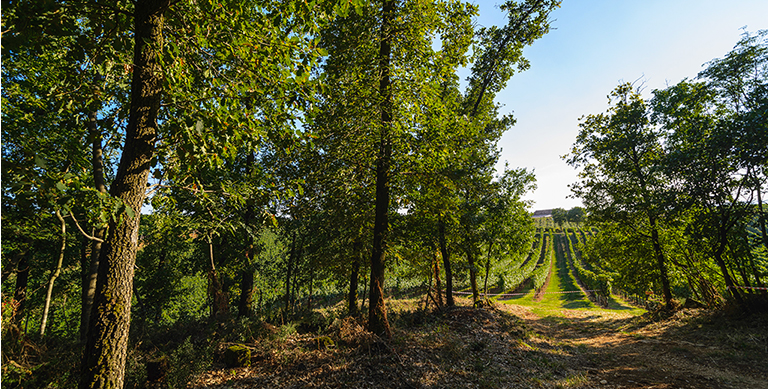21 Oct Biodiversity: the true resource of the Cavazza vineyards
by Elisa Cavazza

Why is biodiversity so important in the Cavazza vineyards? We will provide a clear, simple explanation in this article.
The concept of biodiversity and its importance, as well as the issue of sustainability, are closely linked and extensively debated concepts. We recently explained our idea of sustainability and today we wish to focus on biodiversity.
We will start from a fundamental question: What is biodiversity?
This term (which is an abbreviation of biological diversity) was coined in 1988 by the American entomologist Edward O. Wilson and can be defined as the enormous variety of life on earth: the millions of plants, animals and microorganisms, as well as the genes they contain and the complex ecosystems they form in the biosphere. All these forms of life (plants, animals and microorganisms), by living together in the same area, create a particular balance that affects their ability to withstand environmental changes, thereby boosting the productivity of that particular ecosystem. Each species within it has a clearly defined role and consequently helps the entire ecosystem maintain a state of dynamic equilibrium.
In grape-growing, biodiversity is influenced by soil and climate conditions, as well as the cultivation practices that are adopted. In our vineyards we must be able to comprehend not only the biodiversity opportunities around our estate, that is the surrounding landscape ̶ in our case, the beautiful hills encircling our plots ̶ but also biodiversity which encompasses the genetic heritage of our vineyard. The age of the vines, the interaction between the rootstock and aerial part as well as the soils are the main sources of genetic biodiversity of a terroir: a priceless legacy for a wine with controlled designation of origin like Cavazza’s DOC Colli Berici, therefore we chose to protect and safeguard this natural capital.
Soil management techniques, fertilization, pest and disease control, work in the vineyards and mechanical tillage affect the amount of water and nutrients that are available to the plants, having a direct impact in terms of grape production and the financial performance of a vineyard. Consequently, Cavazza’s wine-growing choices have focused on practices such as grassing and manure cropping. On the edges of our vineyards, we have created woodlands and shrublands with Mediterranean and local flora, including plants such as oak, holm oak, lentisk, arbutus unedo and ash trees. This also enables us to make pleasant discoveries, such as the natural population of dwarf Opuntia Tablet prickly pear cacti ̶ in a volcanic elevation in the Selva area, which is very dear to us. On land which is not planted with vines we have opted to grow olive trees. Moreover, cover cropping and planting of local plants help us increase resistance to soil erosion and enhance the integration of each element of the environment, which is the true richness of our territory.
The vine growing terroir, the vineyards we are so fond of that we have given a name to each one of them, comprises many, complex elements that coexist synergistically. It is up to us winegrowers to respect these distinctive characteristics and ensure that they are kept as they are, with a view to aiding environmental conservation: this is how Cavazza wishes to affirm its commitment.
Share your pics with
 Deutsch
Deutsch



